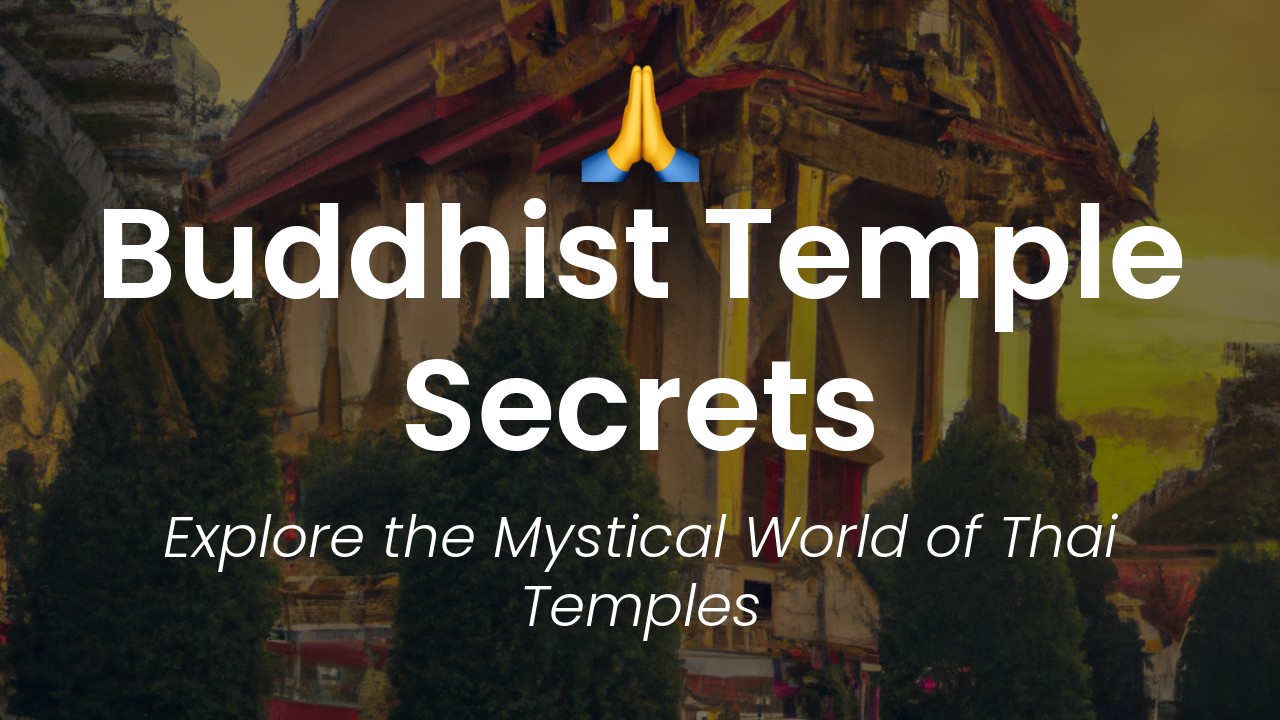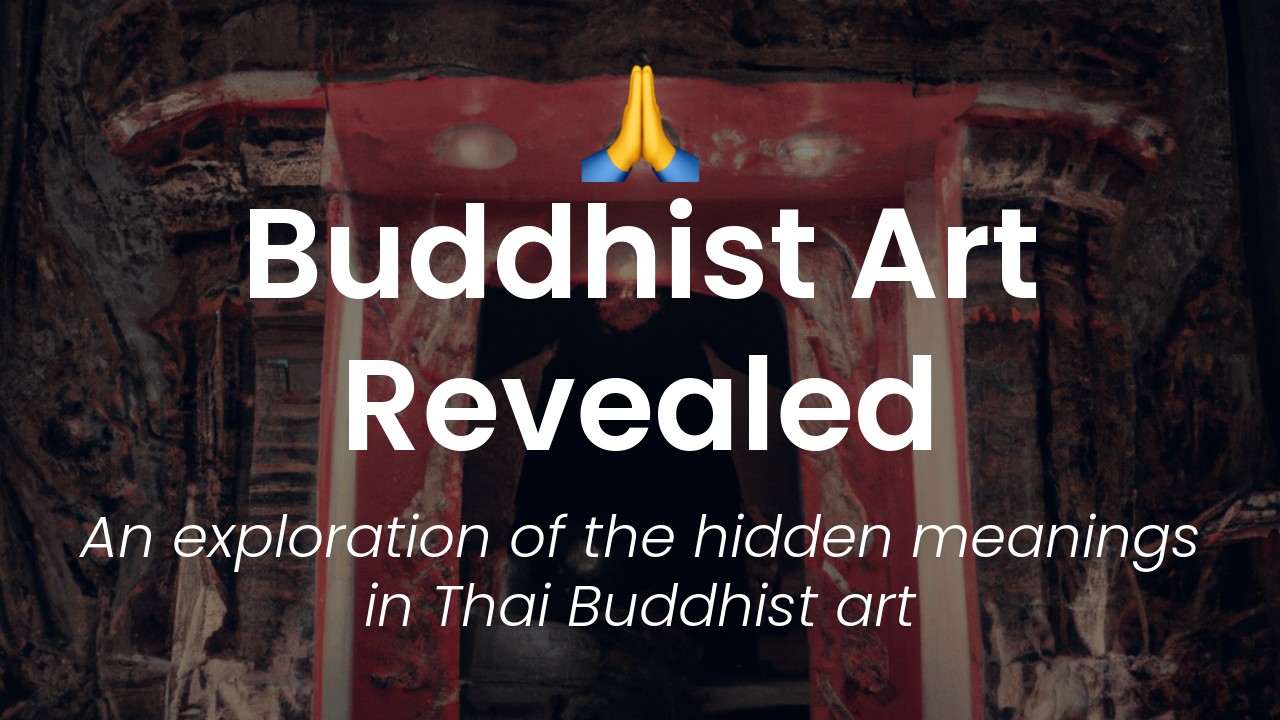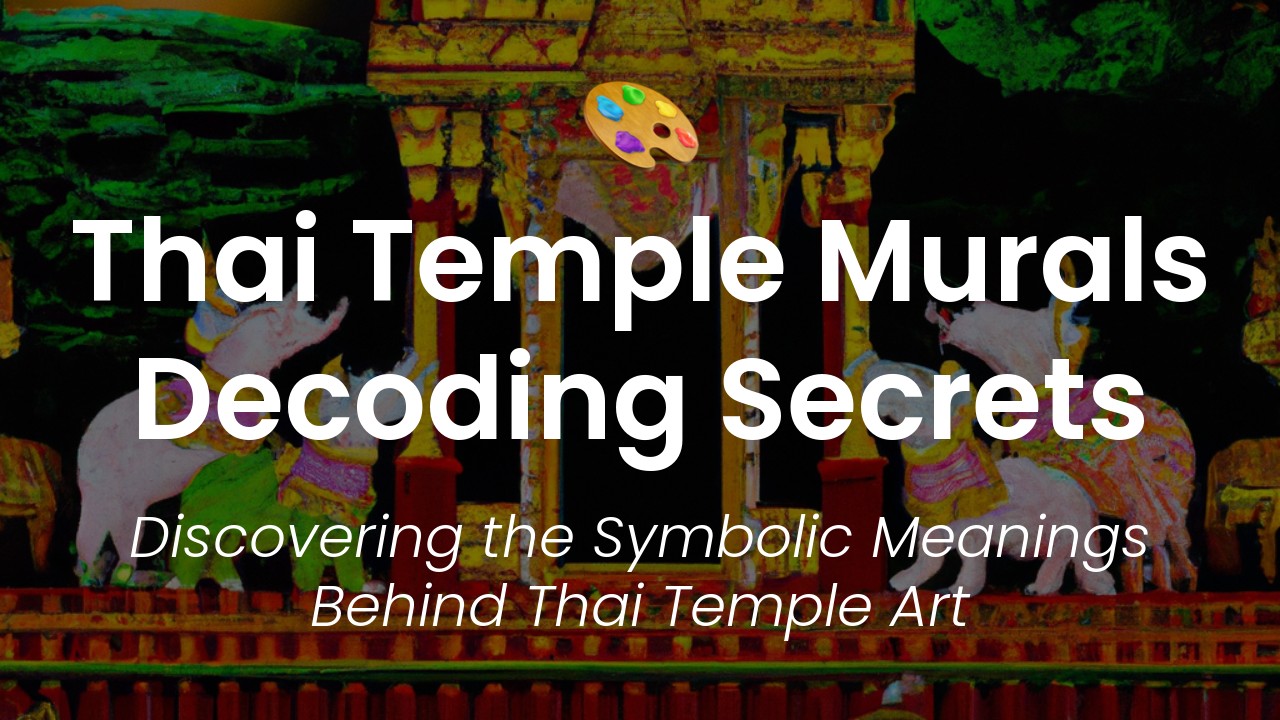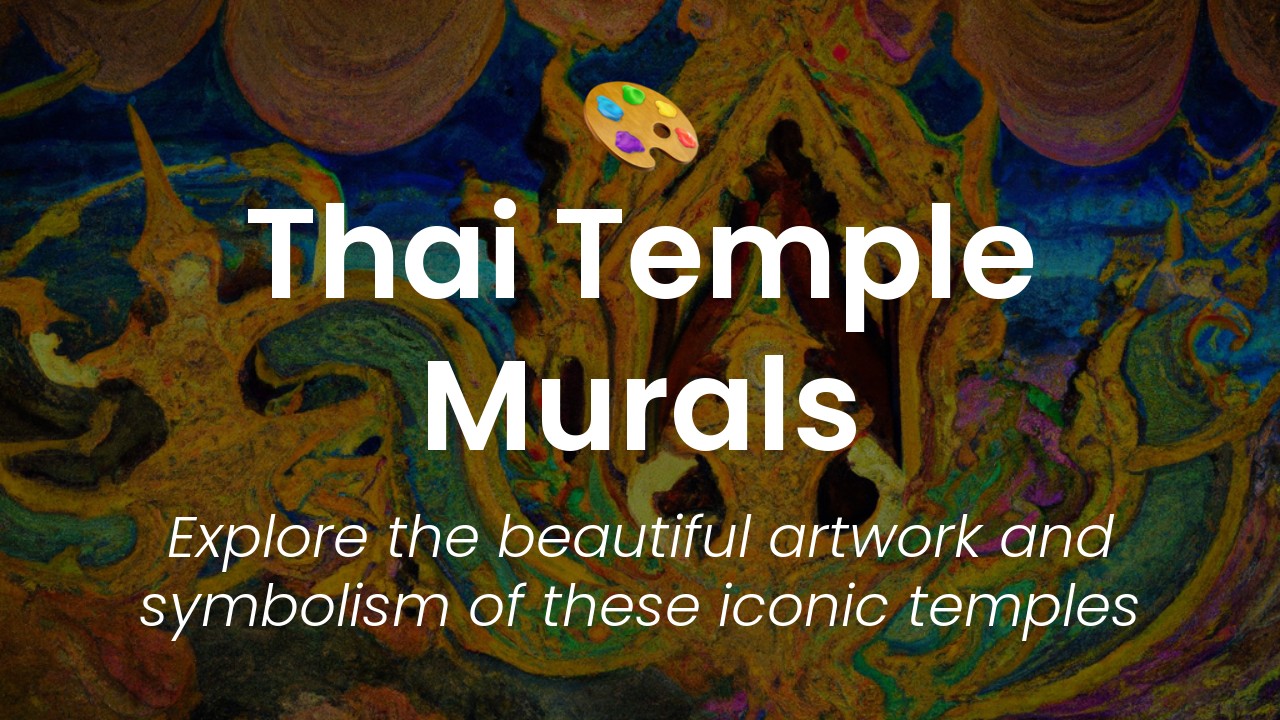Greetings, fellow travelers and culture enthusiasts! As a proud ambassador of the beautiful and vibrant country of Thailand, I welcome you to my blog. Today, I'd like to take you on a journey of discovery, unlike any other, as we explore the divine secrets of Thai Buddhist temples.
For hundreds of years, Thailand has been home to some of the world's most magnificent temples, rich with history, culture, and architectural marvels. These serene and sacred places of worship act as a gateway to understanding the profound religious and spiritual traditions of Thailand. As a devout Buddhist, I have spent a considerable amount of time visiting these architectural wonders, marveling at their intricate details, and learning about their unique history and significance.
In this blog post, I will be sharing my own experiences visiting some of Thailand's most beautiful temples. I will take you on a journey from the bustling streets of Bangkok to the tranquil countryside, where hidden gems of Buddhist architecture await. You will learn about the rituals and practices that take place within these sacred spaces, gain insight into the beliefs and values of Thai people, and uncover the stories underlying the temples' stunning artwork and design.
So, join me on this spiritual and cultural odyssey, and let's explore the divine secrets of Thai Buddhist temples together. Are you ready? Let's go!
Understanding Temple Layouts
As one of the most prevalent faiths in Thailand, Buddhism has adorned the country with thousands of temples, each rich in history and tradition. These temples are elaborate, stunning, and never fail to amaze visitors with their beauty and architecture. But stepping inside a temple can be daunting without knowing what each section represents.
Thai Buddhist temples are usually divided into three significant areas: the ordination hall, the stupa, and the assembly hall. The ordination hall, also known as the ubosot, is the most sacred area where monks conduct ordination ceremonies and perform crucial functions in Buddhist practices.
The ubosot features a sloping roof with intricate designs and tiered gables. The pillars supporting the roof are adorned with depictions of mythical animals such as nagas, and the walls are painted with murals showcasing the life of the Buddha and other significant events in Buddhist history.
The stupa is a dome-shaped structure that houses religious relics and other sacred Buddhist texts. In Thailand, the stupa is known as Chedi, and they come in different sizes, with some towering as high as 80 meters.
Finally, the assembly hall, or Wiharn, is where devotees gather to participate in religious ceremonies. Most of the time, the hall is also home to monumental Buddha statues, and in some temples, the hall is open to the public, displaying religious artifacts and other Buddhist art.
Understanding the layout of a temple is not only educational but also provides insight into the daily religious life of monks and the importance of Buddhist traditions in Thailand.
Significance of Buddha Images
Buddha images are a predominant feature in Thai temples, and each statue comes with a unique meaning. Thais believe that the image of the Buddha represents spiritual guidance, and having an image at home or in the temple promotes inner harmony and positive energy.
There are different postures or Mudra of the Buddha, and each has a symbolic meaning. For instance, the Teaching Buddha posture, with the right hand raised and facing outwards, signifies a universal gesture of protection and peace.
The reclining Buddha posture, known as the Mara Subduing Buddha, represents the Buddha's final actions before reaching enlightenment. It symbolizes the victory over the illusionary attachments, cravings and desires that lead to suffering.
Understanding and appreciating the different meanings behind Buddha images is a fantastic way to connect with the essence of Thai culture and Buddhism.
Symbolism of Temple Decorations
The decoration in the temples is not just to make them look beautiful. Rather, every element and structure carries profound symbolic significance. From pictures and murals to the temple’s pillars and roofs, everything is laden with meaning.
The murals on the walls of a temple depict the life of Buddha, his teachings, and the history of Buddhism. These elaborate paintings are usually painted on a gold background and are accompanied by Thai-style ornaments and decorations.
The doors and windows of the temples are also adorned with intricate designs and patterns that are meant to ward off evil spirits and protect the holy space from negative energies.
The roof of a temple is a prime example of the importance of symbols in temple decorations. The roof's peak is often decorated with a delicate carving of a mythical creature called the "Tawanok," which according to legend, symbolizes the sun and the moon.
Importance of Offerings & Rituals
One of the mesmerizing experiences of visiting a Buddhist temple is observing monks chanting, praying, and performing religious rituals. These ceremonies are an integral part of Buddhist culture and are a way of showing respect and appreciation to the teachings of the Buddha.
In each temple, there is an area designated for making offerings. Devotees usually offer incense, candles, flowers, and gold leaf, a common practice in Thai Buddhism. Gold leaf is used to pay respect to the Buddha image by pasting it on the statue.
The offerings play a big role in the temple's economy as it provides financial resources to maintain and operate the building and allows the monks to carry out their ceremonies and rituals.
Meditation Practices at Temples
Meditation is a significant part of Buddhism and is practiced extensively in Thai temples. The temples provide a peaceful environment for visitors to meditate and connect with their inner selves.
Typically, the meditation practice starts with paying respect to the Buddha image and chanting of the Buddha's name. Visitors are then instructed to focus on their breath and concentrate on their present thoughts and emotions.
Mindful breathing is a fundamental aspect of the meditation process, and it helps practitioners attain mental peace and mental clarity. Meditation also offers a way for the practitioners to achieve an understanding of the world around them and promotes a better understanding of themselves, others, and the world at large.
Thai Buddhist Festivals & Customs
Thai Buddhist Festivals offer visitors the opportunity to witness some of the most colorful and exciting ceremonies in the country. Festivals like Loy Krathong and Songkran (Thai New Year) showcase Thai culture and traditions.
Loy Krathong is famous for colorful floating baskets, which are made of banana leaves and usually carry offerings such as incense, candles, and flowers. Visitors release these baskets into the river at sunset to pay respect to the water goddess and cleanse themselves of sins and bad luck.
Songkran is a festival celebrated during the hot season in Thailand and is known for its water fights. The festival signifies new beginnings and is a time for making merit by visiting the temples and giving alms or making offerings.
Attending these festivals is a great way to connect with the people of Thailand and experience the culture first hand.
Exploring Lesser-Known Temples
Despite Thailand's popularity as a tourist destination, there are still lesser-known temples off the beaten path, waiting to be explored. These temples offer the opportunity to witness the authentic and unique cultural heritage of Thailand.
For example, the Wat Chalermprakiat has a unique design that makes it appear as if it's floating on air. The temple is built on a huon pine forest and offers grand views of the surrounding mountains. Another example is the Wat Tham Sua, known as the Tiger Cave Temple, which is famous for its 1,250 steps that lead to the top of the temple, offering breathtaking views of the lush greenery.
Conclusion
Temples in Thailand have a unique charm that attracts people from all over the world. The tranquility, beauty, and spirituality of these structures make visiting them a remarkable experience. Buddhist temples in Thailand are impressive and offer much more than just exquisite architecture and stunning visuals. The intricate symbols and traditions found within these temples should be appreciated and understood as they are a cornerstone of Thai culture.





